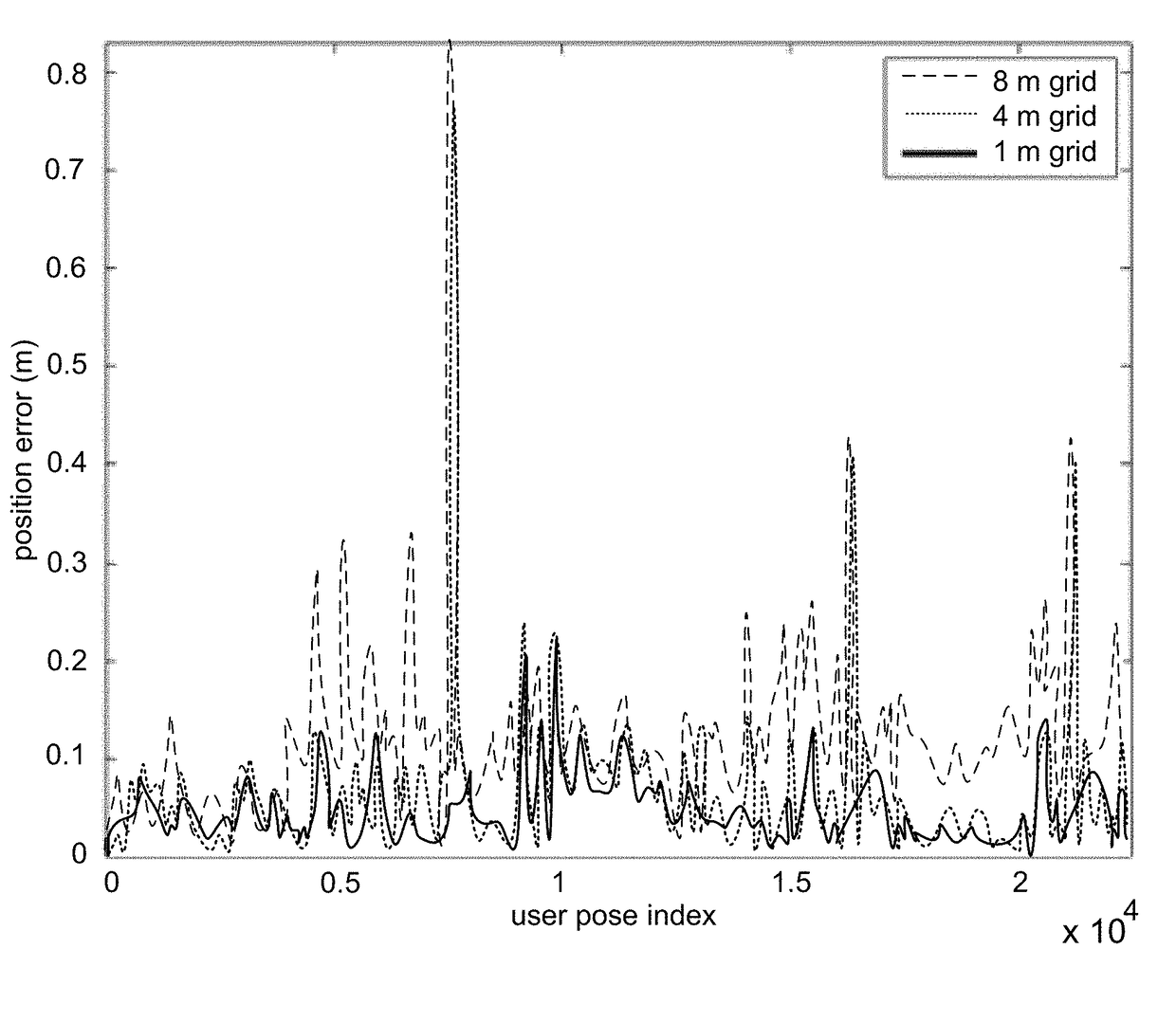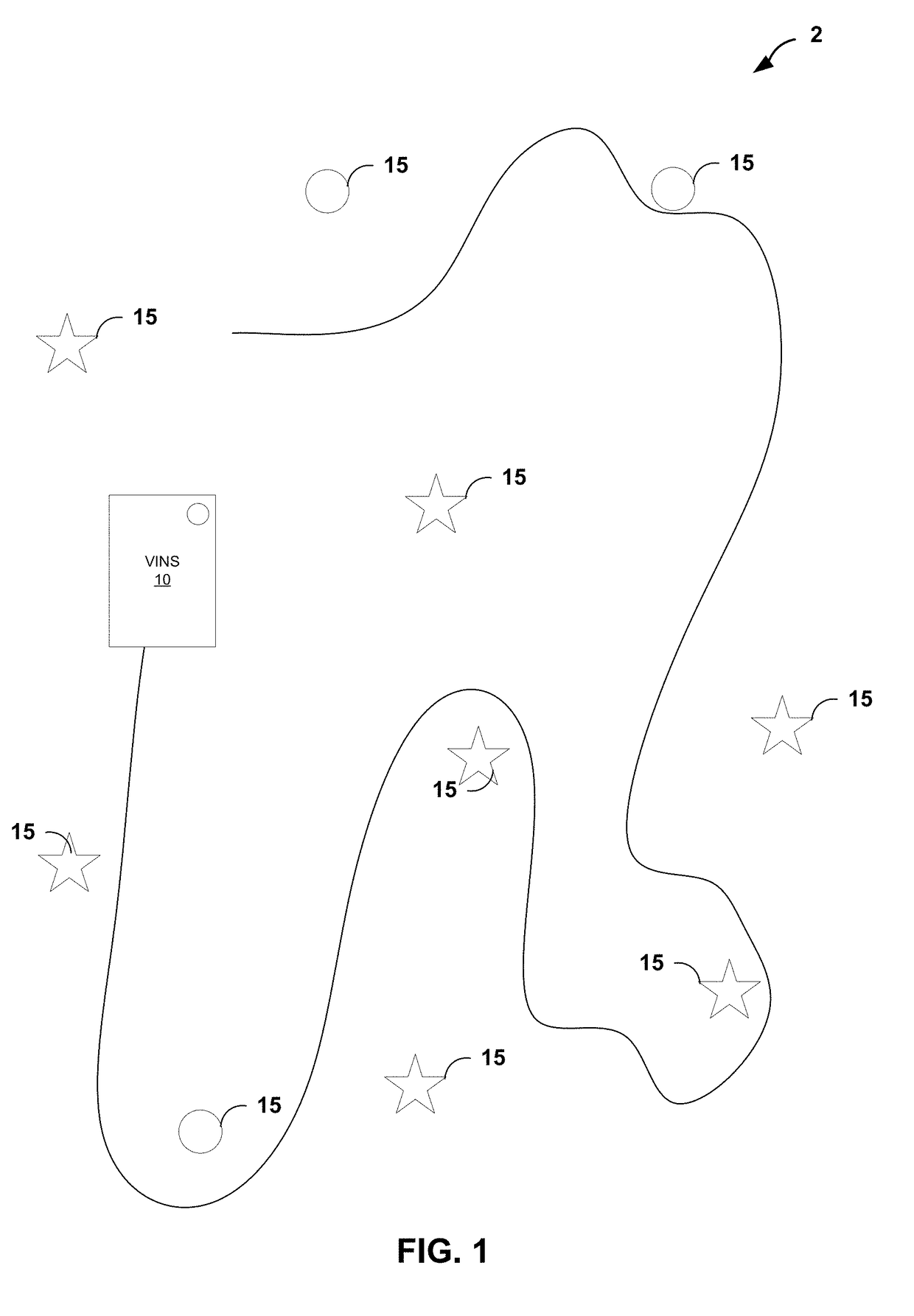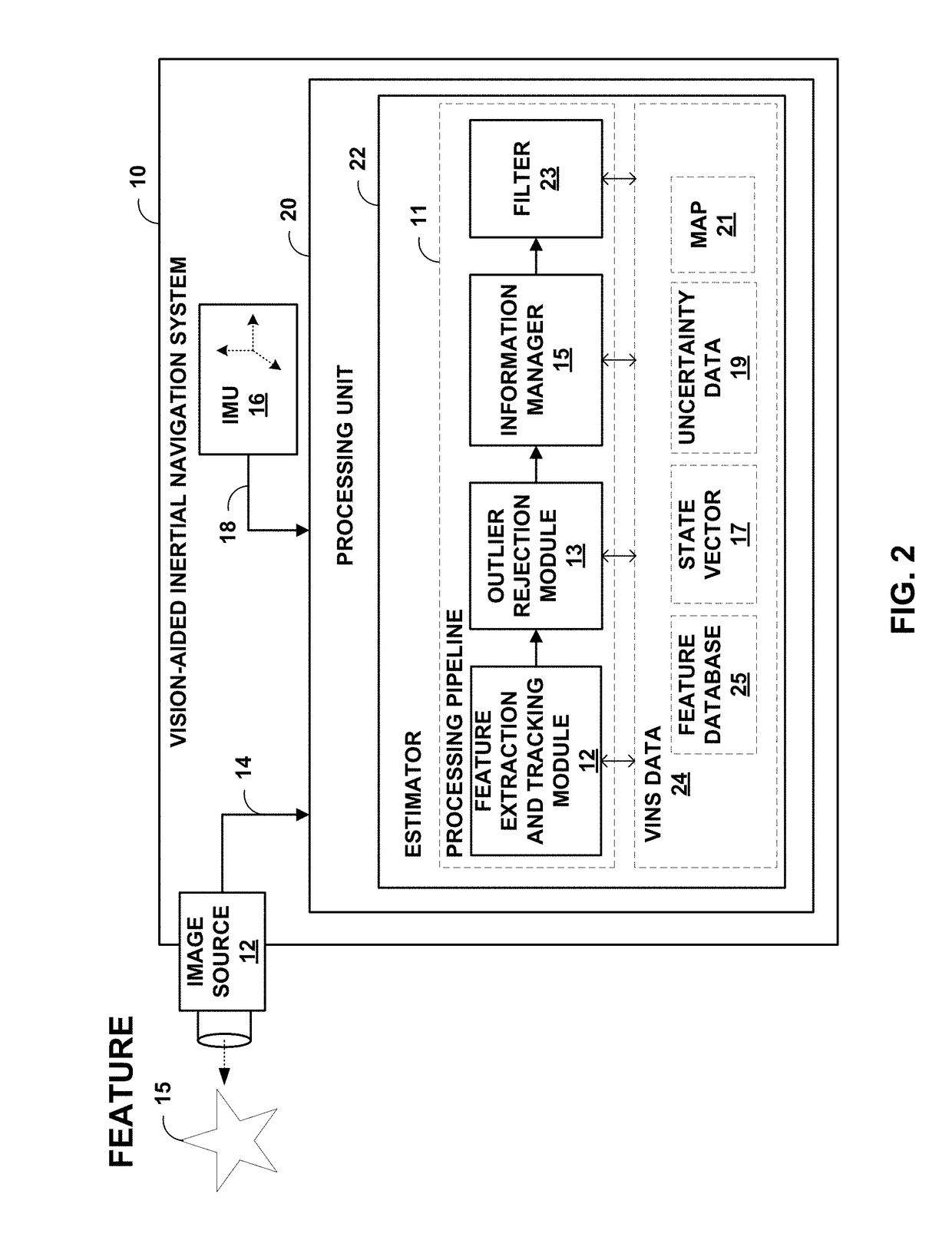Resource-aware large-scale cooperative 3D mapping using multiple mobile devices
a cooperative, resource-aware technology, applied in the field of navigation, can solve the problems of not having enough storage space or battery for recording data, not being convenient for a single user to navigate the whole building at once, and a single mobile device can create a complex map with a single mobile device, so as to reduce the processing cost, reduce the complexity of the map, and solve the problem of memory demands
- Summary
- Abstract
- Description
- Claims
- Application Information
AI Technical Summary
Benefits of technology
Problems solved by technology
Method used
Image
Examples
example algorithm
Description
[0070]In what follows, we first briefly review the BLS method for determining the trajectory and map of each user based on only its own measurements, and then describe in detail an approach to find an initial estimate for the relative poses between users. Subsequently, we introduce our example CM algorithm and present a method for “sparsifying” (i.e., reducing their number and thus spatial density) the commonly-observed-feature constraints.
Single-User Batch Least-Squares
[0071]For a user j, computing the BLS estimate requires minimizing the following non-linear cost function:
j=∥j{hacek over (p)}−g(j{hacek over (p)}, ju)∥jQ2+∥jz−h(jxu)∥jR2 (18)
where the first term corresponds to the cost function arising from IMU measurements (4), while the second term is due to visual observations of point (5), free-line (7), and Manhattan-line (9) features. Also, in (18) j{hacek over (p)} and jxu denote the user' poses and entire state [see (1)], respectively, ju includes all IMU measure...
PUM
 Login to View More
Login to View More Abstract
Description
Claims
Application Information
 Login to View More
Login to View More - R&D
- Intellectual Property
- Life Sciences
- Materials
- Tech Scout
- Unparalleled Data Quality
- Higher Quality Content
- 60% Fewer Hallucinations
Browse by: Latest US Patents, China's latest patents, Technical Efficacy Thesaurus, Application Domain, Technology Topic, Popular Technical Reports.
© 2025 PatSnap. All rights reserved.Legal|Privacy policy|Modern Slavery Act Transparency Statement|Sitemap|About US| Contact US: help@patsnap.com



